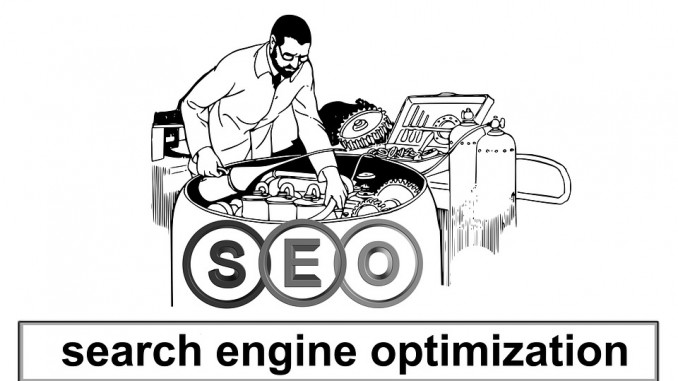
One might have heard a lot about SEO for an e-commerce website and how it works. SEO basically stands for Search Engine Optimization. It is a repeatable, measurable process that is applied to send signals to the search engines about which pages are worth showing in Google, Yahoo and Bing’s index.
In layman’s language, if a site or a page doesn’t have a strong SEO Strategy in place, it means they are losing out on clicks, sales and brand impressions.
It can also be termed as a pathway for generating more traffic from the search engines. SEO tactics include HTML structure, page content, inbound links, keyword usage, on-page, domain’s collective content and website architecture.
What is the Importance of SEO?
SEO is a portrait of customer acquisition for e-commerce stores and a major driver of development and growth. It delivers results which are long-lasting, measurable, targeted and cost-effective.
It’s a critical tool for helping customers find various e-commerce websites and stores. The way in which technology has transformed over the years has evolved the way consumers purchase products now. Search has become an important part of the decision making process.
E-commerce SEO Strategy 2018
With frequent new search engine feature updates, conflicting advice and algorithm changes, many e-tailers and websites are unsure about where to start with SEO.
SEO for an e-commerce website involves much more than simply adding the right keywords on a page. It touches on each and every part of the e-commerce website.
The best 2018 SEO Strategy includes:
Site architecture based on keyword search
Technical SEO to ensure search engines can find the various sites efficiently
Content marketing for additional visitors
Keyword research to find the various keywords customers are looking for
Local SEO used to drive local traffic
On-page SEO done through strategic optimization in tags and meta tags
Here are 5 important true and tried tips for e-commerce SEO strategy 2018 which can deliver some significant results and help an e-commerce website gain an edge to return healthy revenue and stay ahead of the competitive curve:
Mobile optimization
If an e-commerce website is not mobile optimized, it is at serious search disadvantage. If a website is looking to take things a notch up, Google’s AMP format can further optimize mobile experiences by improving mobile search rank and reducing load times. There are various tools that can check if an e-commerce website is mobile configured or not.
Adding Customer Reviews
One of the major reasons behind the abandonment of e-commerce sites is mistrust. Adding customer reviews provides customers with the information they need to finalize their purchase.
Customer reviews are also significantly responsible for improving the user experience by mixing third-party credibility to e-commerce. Search engines nowadays have started treating customer reviews as a new website engagement and content, which are indeed factors that influence website ranking.
Optimizing content
• Category pages
It is important to treat category pages as individual homepages from a content perspective. It simply means to optimize content such as links, H1’s etc. for a term that the site is trying to rank for. This will increase the chances of ranking for broader terms and allow a broader sense of content.
• Product Description
From an SEO perspective, product descriptions have become a challenge for e-commerce websites and e-tailors having an e-commerce presence who sell from manufacturers.
To separate a website from its competitors, it is essential to focus on the psychology behind every product. Giving more than generic details about the product, than what the manufacturers offer, helps in attracting people to buy that particular product.
Also, it is important to include keywords for a product in places that are required and make sense.
• Reducing Load Time
Fast load times significantly impact search rankings. A solid benchmark for load time is around 100-200 milliseconds. There are a number of ways in which site speed can be improved. For example, image commpression can have an immediate impact. Also, it’s an important aspect of a great user experience.
One can always check Google task manager to take inventory of active scripts on an e-commerce site. It is advisable to remove excess calls that may be slowing the site down.
Resolving Site Errors
Site errors include indexed 404 errors or pages, broken links in sitemap files etc. Resolving these errors improves Google’s ability to index an e-commerce site and affect the ranking in a positive manner.
An e-commerce website can be kept clean by continually using Google search console.
Addition of Breadcrumbs
SEO for an e-commerce website allows breadcrumbs for both users and Google to understand specific child-parent relationships for product categories and products. This is a sure shot tactic that can increase the rankings of a website and improve the user experience.
SEO e-commerce techniques and tactics remain the cornerstone of any successful e-commerce business. These 5 tips will make any e-commerce site competitive and ensure the right amount of exposure in the search engines.
Such simple steps can help in cultivating a much greater yield in the long run and achieve major boosts if practiced consistently. With time and patience, one’s e-commerce store will convert users into loyal, happy and satisfied customers.
Mansi Rana is managing director and story teller at EZ Rankings. She enjoys connecting with people, keeping her self updated with the latest in the field of business, technology and fashion and spending quality time with her family. Find details at https://www.ezrankings.org/smo.htmlThe post E-commerce SEO Strategy: 5 Important Tips for 2018 appeared first on SiteProNews.
Source: Site Pro News
Link: E-commerce SEO Strategy: 5 Important Tips for 2018



Leave a Reply